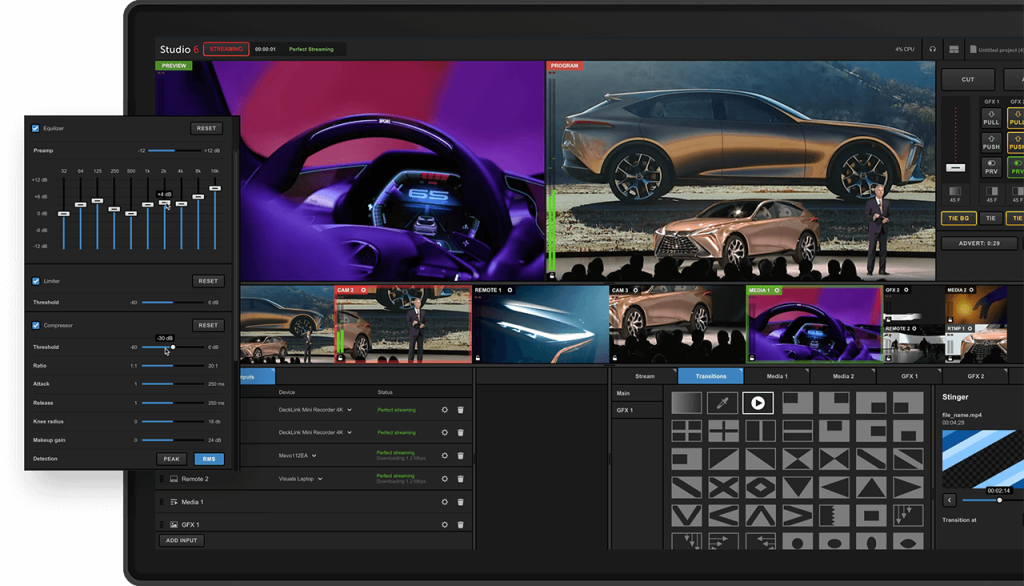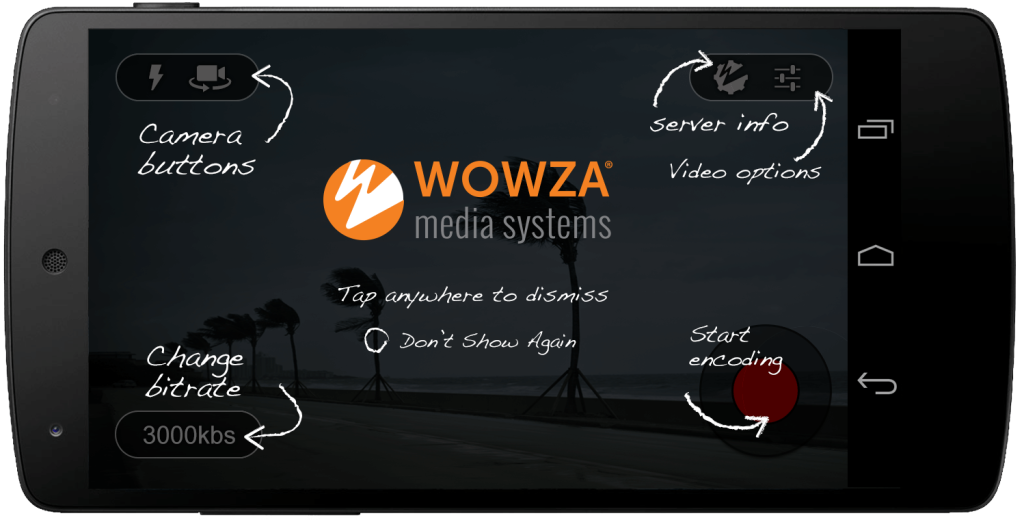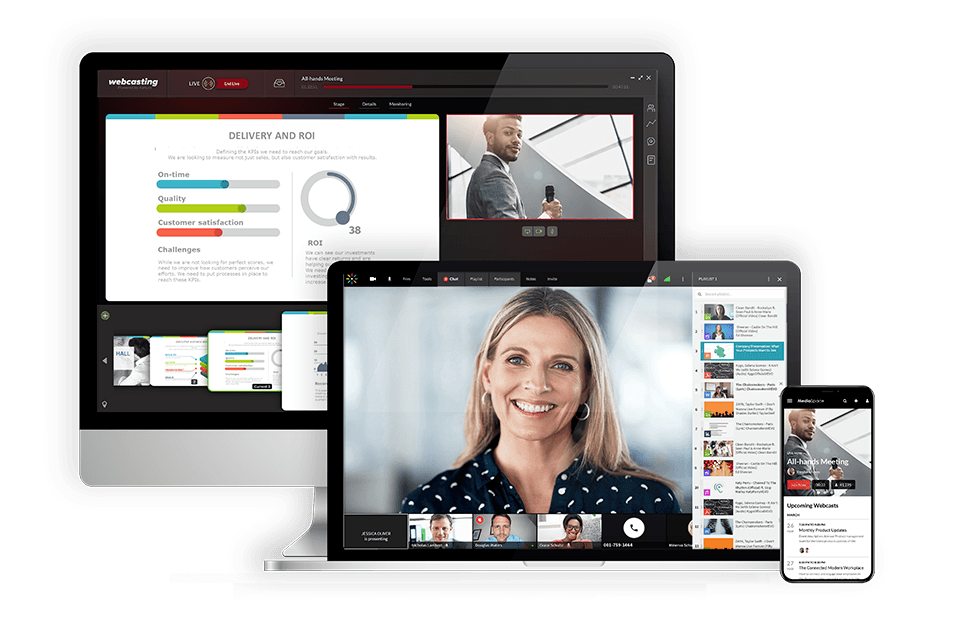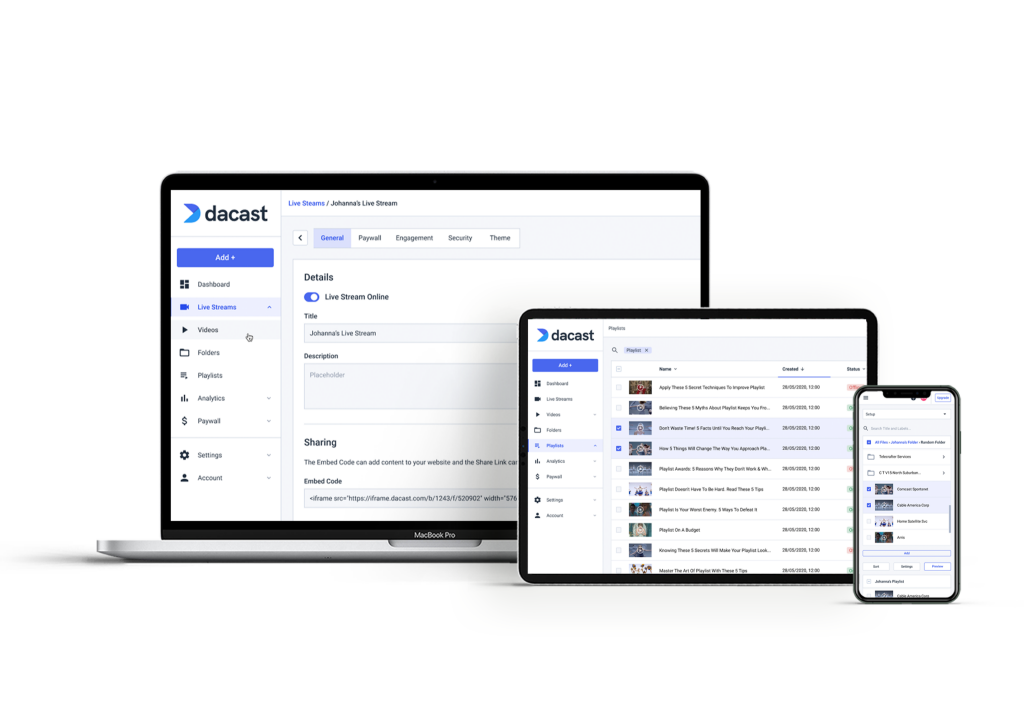5 Streaming Video Services with Video API Access
Online video is expected to have an audience reach of 92% of all internet users in 2025. Live streaming is expected to account for a sizable proportion of this traffic. In fact, industry insiders are calling this the “video first” revolution.
Visual content is on the rise, and businesses that don’t invest in video now are already falling behind. This article will help you learn how to get on board and make the most of this trend. Specifically, this post focuses on live streaming service APIs and video hosting solutions that offer access to video APIs.
Some other trends to keep in mind: major corporations are doubling down on video streaming. Case-in-point:
Case-in-point:
- Redbox has launched a new streaming service
- Disney entered the streaming market with Disney+ on November 12, 2019
- On the B2B side, IBM recently purchased UStream and launched IBM Video Streaming.
APIs are critical to all of those services. Actually, they’re key to most online videos we see today.
APIs enable amazing customization and integration. In this article, we’ll review the basics of video APIs. We’ll also cover what streaming video services allow you to do via their API.
We’ll also go over the skyrocketing use of video APIs. Finally, we’ll briefly review 5 streaming video providers that offer API access.
Let’s dive right in and explore video streaming APIs!
API Basics


Before we go further, let’s first review the basics of what APIs are and how they work.
The Fundamentals of Video API Operation


The term API stands for Application Programming Interface. Simply put, an API is a simplified interface for a program or service. APIs are available for many digital services and products. APIs are becoming more and more essential in many industries.
In many ways, an API is like an electric plug. It’s a standardized interface. You can build many different types of devices that jack into a standard electric plug. Additionally, this works even if you travel internationally! For example, you can adapt a device for another type of electric grid to work with any electric plug.
Imagine if we didn’t have standardized plugs. We would have to design each appliance specifically for the place we want to use that appliance. Voltage and amperage would vary wildly. Safety would be an issue.
Following that analogy, an API is a solution to a similar problem. It provides a simplified, standardized method for interacting with a given platform or service.
Video APIs grant access to streaming video services and hosting. Users can write simple code to build their own web, mobile, or desktop applications. In turn, these apps interface with their streaming video services.
Also, note that this code uses understandable language and a regular format. This makes it much, much easier to develop custom applications and integrations. APIs save time, effort, and expense. It’s not surprising, then, that software developers love APIs.
API Enables Streaming Video Services
Sure, APIs make life easier. But what is easier, exactly? Well, we can use APIs for a wide variety of tasks. Now, let’s consider a few examples from our experience in live-streaming video services here at Dacast.
Example 1 – OTT Industry: Integrations and Portals


The entertainment industry widely uses APIs. As TV and premium content increasingly move online, the industry is adapting fast. Online content (OTT) is taking over. Netflix, iTunes, Amazon Prime Video, Hulu, and HBO Go all support this trend.
For example, Netflix grew from 17.4 million subscribers in 2015 to 93.8 million by the end of 2016 and all the way to 221.6 million subscribers at the start of 2022.
Among our API users are several TV stations. They use the Dacast video API to integrate OTT video in their own media workflow.
From there, TV stations can upload and manage their content directly from their own environment. They don’t even need to log in to their Dacast account. Their viewers access the video on their online video portal. Video API makes that all possible.
Example 2 – Reseller Industry: Access to Platforms


One industry in which API access is essential is value-added reselling. Resellers purchase a streaming plan with bulk bandwidth. Then, they resell functionality to other parties.
Let’s look at an example. Striv.tv provides live sports broadcasting video services to more than 80 high schools in the United States. Their contracts also allow them to deliver multimedia production education to students.
The platform exists on top of Dacast’s using our video API. This allows Striv.tv to deploy a customized video streaming web platform to each school. These platforms run on Dacast, but an API customizes and serves them.
That is what a streaming API is useful for; creating a custom experience.
Example 3 – Video Education and Partner Access
Video is increasingly being used in education as well. Online learning, flipped classroom models, and lecture captures are rising in popularity. Video services provide a way to build community and share knowledge while leveraging modern technology. The good news–getting started with educational video streaming is easy.
Our online video education platform solution example comes from MorningCME. As a Continuing Medical Education provider, MorningCME works with hospitals and clinics in rural areas. In coordination with cutting-edge medical institutions, they offer video training to users.
Their use of the Dacast API allows them to provide access to partners. These partners can upload and stream video content via the MorningCME website. This is all taking place on the Dacast system, but transparently. They describe the Dacast video API as “critical to our success.”
Example 4 – Disney ESPN
Disney’s ESPN network is exploring the use of AI to personalize its “SportsCenter” show. By leveraging a streaming API for broadcasters, they aim to offer tailored content to individual users. This approach involves analyzing viewer preferences and using that data to deliver customized highlights, scores, and even sports news. With this live streaming API integration, ESPN can enhance viewer engagement, providing a more personalized experience that adapts in real time to each user’s interests.
Example 5 – APIs for Virtual Events
Many companies are using low latency streaming APIs for virtual events and live conferences. For example, a tech company hosting a product launch can utilize a video API feature that reduces lag and ensures real-time interaction between presenters and viewers. This cross-platform video streaming API enables seamless integration across various devices and operating systems, making the event accessible to a global audience. Additionally, it allows for live video monetization through ads or subscription models.
Skyrocketing Video API Usage


Here at Dacast, we’ve seen a major boost in the usage of our API for streaming video. As we discussed in our white paper on the Video API Revolution, data usage by our API customers is rising fast.
API streaming video usage accounts for about 84 percent of all Dacast data use. This reflects the fact that serious, professional broadcasters are choosing APIs. And those broadcasters are the most likely to use the most data and stream 24/7 at high resolutions.
Video APIs Represent a Business Opportunity
In 2016, analysts estimated that mobile ad revenue represented a $16 billion revenue opportunity in the US alone. Video ads make up a major part of revenue. And this is just one example of the business opportunities of video APIs.
With the industry experiencing a rapid pivot towards online content, APIs are critical. At their core, APIs represent an opportunity. Video, as we’ve shared, is a powerful tool. It’s highly engaging and effective as a communication medium.
A video API allows you to leverage this tool in new, more powerful, and more efficient ways. Video streaming APIs allow you to not just host videos on your website, but turn your video content into a business opportunity.
Comparative Analysis of Video APIs
When choosing a video API for your streaming needs, it’s essential to consider key factors like scalability, customization options, and integration complexity. Each platform offers unique features tailored to different use cases, and understanding these differences can help broadcasters select the best solution for their needs.
For example, a high-definition video API can ensure smooth streaming with excellent picture quality, while an adaptive bitrate streaming API allows for a better viewing experience by adjusting video quality based on the viewer’s internet speed. The WebRTC API for live streaming is another great option for real-time, low-latency streams.
Beyond the technical features, API documentation for video streaming is crucial for easy integration. Clear, detailed documentation helps developers quickly get started and avoid potential roadblocks. Platforms like Mux provide developers with tools to build tailored live and on-demand video experiences, ensuring flexibility and efficiency.
Security and Compliance Considerations
Professional broadcasters must navigate security and compliance challenges
Security and compliance are crucial factors for professional broadcasters. As streaming platforms handle sensitive content, it’s important to ensure that the video streaming solution meets industry standards. Integrating video APIs into applications should include measures like encryption and secure access controls to prevent unauthorized use of content. Broadcasters must also consider features that protect their content during transmission and storage.
How APIs can facilitate secure streaming
Video streaming APIs offer tools that make it easier to implement secure streaming. These APIs can support encryption protocols, ensuring that the video stream remains private. They also integrate Digital Rights Management (DRM) systems, which allow broadcasters to control access to their content and prevent piracy. By choosing the right video API provider, broadcasters can ensure secure delivery of their content to viewers, protecting both their intellectual property and their audience’s data.
Compliance with regulations such as GDPR
For broadcasters serving European audiences, compliance with regulations like the General Data Protection Regulation (GDPR) is essential. A reliable video streaming API provider should help ensure that user data is handled according to these standards. This can include features like data anonymization and user consent management. By carefully selecting a video API provider that supports these compliance requirements, broadcasters can avoid costly penalties and build trust with their users.
AI Integration in Video Streaming
Artificial Intelligence (AI) has become an essential part of video streaming, particularly when integrated into live streaming API solutions. It helps improve several aspects of the video streaming process, such as content personalization and real-time analytics. By analyzing viewer behavior, AI can suggest relevant content, making the experience more engaging for audiences.
AI is also used for automating tasks that traditionally require manual effort, such as generating real-time video highlights or adding multilingual subtitles. This can save time and improve productivity for broadcasters. Additionally, AI enables automated metadata tagging, helping to organize and search through video content more effectively.
For broadcasters looking for a customizable video streaming API, AI features enhance the overall flexibility. Whether you’re using a real-time video API or a scalable live video API solution, AI-driven technology helps optimize the streaming experience. Furthermore, with secure video streaming API options, AI plays a vital role in protecting content and ensuring privacy.
Emerging Technologies
Emerging technologies like Low Latency HTTP Live Streaming (LL-HLS) are reshaping the way live events are experienced online. LL-HLS reduces latency, which is the delay between a live event happening and it being viewed by an audience. For professional broadcasters, this is a game-changer as it ensures that viewers enjoy near-real-time content, making it ideal for events like sports or live concerts.
As the demand for seamless streaming continues to rise, scalable live video API solutions are becoming essential for managing large audiences. These solutions can handle high-traffic loads without sacrificing performance, which is crucial for events that attract millions of viewers.
Additionally, advancements in video API features allow for enhanced user experiences, such as on-demand video API services that offer flexibility for viewers to watch content whenever they like. API for live video monetization is also gaining attention, helping broadcasters generate revenue through ads or subscriptions. A RESTful video streaming API or API for OTT video services can provide the necessary infrastructure to support these innovations.
Top 5 Video Streaming Services Offering Video API Access
Now you understand what an API is, why they’re important, and how they work.
Let’s turn to review a number of video streaming services, including our own streaming solutions. As we all have limited time, we’ve devised a short list of pros and cons for each platform.
1. Vimeo


Overview
Vimeo’s offer includes all the basics an OVP would offer: live streaming, video on demand, auto-recording of live streams, and so on. Streams can take place using an encoder and are delivered in multiple bitrates to mobile devices, desktops, smart TVs, and other devices.
Best Features
Vimeo’s best features include subscription monetization, API access, custom video portals, and more. However, these features cost a lot of money to access. Costs can rise rapidly when these features are added to your plan.
Pros
- Unlimited storage and bandwidth
- Watermarking (starting $999 per month)
- Integrated hardware offerings
- Live Chat
- Analytics (starting $199 per month)
Cons
- API only available with custom plans
Pricing
Vimeo offers basic video hosting plans that are suitable for content creators and startups. These include:
- Free: Try Vimeo for free
- Starter: $12/month billed annually; 1+ seats; 100 GB storage; privacy controls, custom video player, custom URLs
- Standard: $20/month billed annually; 2+ seats; 1 TB storage; brand kit, teleprompter, text-based video editing
- Advanced: $65/month billed annually; 2+ seats, 5 TB storage; AI-generated chapters and text summaries, host live broadcasts and webinars
Vimeo is great if you want to maximize the usage of your content by turning your live streams into VOD content.
2. IBM Video Streaming

Overview
Once known as “Ustream,” IBM Cloud Video is very well known in the streaming industry. Although it is pricey, it offers hosting for both live and on-demand videos.
Best Features
IBM Video Streaming plans include relatively basic video functionality. Basic streaming accounts are free, with advertising supporting IBM Video Streaming. Paid accounts remove advertising and grant access to advanced features. Enterprise accounts allow for full custom branding and offer analytics, multiple live channels, content syndication, and more.
Pros
- One of the best-streaming cloud storage set-ups, with reliable cloud streaming.
- Responsive customer support, helping you if you ever run into issues.
- Enterprise-grade video capabilities for large organizations, r
- Hong Kong (China) video hosting.
- Impressive analytics feature where you can monitor various KPIs of live streaming.
Cons
- Uses an internal content delivery system
- General plans don’t offer APIs
- The chat feature isn’t the best given that this supports a large audience
- Users report issues with data synchronization and upload when there’s heavy traffic on the platform.
- The file management system isn’t good if you have many files because it gets challenging to find what you’re looking for.
- Although it allows non-hosts to interact with the broadcast and share files, the permission-granting process is tricky and requires a learning curve.
Pricing
The pricing plans for the IBM Video Streaming include:
- Silver – $137/month
- Gold – $688/month
- Platinum – $1,380/month
Custom – Please contact IBM Video Streaming for custom plan pricing.
3. Wowza


Overview
One of the earliest live video streaming solutions we wanted to review here is Wowza Streaming Cloud. Wowza is feature-rich and provides a customizable platform for broadcasters of all sorts. It was founded in 2005 by David Stubenvoll and Charlie Good. Wowza is a bootstrap start-up, with live and on-demand live-streaming capabilities.
Best Features
Wowza offers two main products. The first is the Wowza Streaming Engine. This product is widely used in the industry for self-hosted streaming.
The second is the Wowza Streaming Cloud offering. This functionality includes a variety of features aimed at providing low-latency content access to global audiences.
Pros
- Powerful security
- Supports streaming on most devices
- Live streaming and video-on-demand
- Connects with Google Analytics
- China video delivery
Cons
- Monetization through integrations only
Pricing:
Wowza offers affordable access to video streaming APIs for broadcasts that want to create a customized video experience on a smaller budget.
Wowza recently overhauled its pricing plans and added several options. These are split into 2 main tiers: Streaming Video Cloud Streaming and Streaming Engine.
The Wowza Video Streaming Cloud offers four distinct pricing plans and services. Live Event Pricing, monthly plans include:
- One Month Event: $149 one-time purchase; includes 15 hours of live streaming and 500 viewing hours
- Pay as you go: $0/month; $2.50/hour of streaming, all usage billed separately
- Enterprise: Plans built for your needs; contact sales for custom pricing
The Wowza Streaming Engine has its own pricing plan packages. These professional-grade streaming plans are billed annually and include:
- Pay As You Go: only pay for usage + $2.50 per streaming hour, $0.10 per viewer hour
- One Month of Streaming: $149/month one-time purchase
- Enterprise: Please contact Wowza directly for access to their custom-tailored high-volume enterprise solutions
Check out Wowza’s pricing page for alternative plans and packages.
If you need a budget-friendly video hosting platform with streaming security, try Wowza.
4. Kaltura


Overview
The Kaltura online video platform targets large institutions. In particular, Kaltura focuses on four markets: video services for educational institutions, enterprises, media companies, and OTT video services. Historically, this company has worked most extensively with educational institutions.
Best Features
This video streaming solution is an alternative to the self-hosted model. The software for Kaltura is free, however, it requires an infrastructure of servers for hosting and distributing content. Kaltura provides cloud-based video hosting and distribution for both VOD and live streams.
Pros
- Analytics dashboard
- Monetization options
- Security options
- Open-source, expandable via plugins
- Active community
Cons
- Many options for customization may get complex for beginners
- Slow uploads to the cloud
- No China video delivery
- Users complain about the lack of sufficient customer support
Pricing
Kaltura offers lots of integration and customization, along with API. Kaltura focuses on the educational sector but has robust tools that other industries could benefit from.
Prices are based on the solutions you’re looking for. These include but are not limited to:
- Free trial: $0 for two webinars
- Business: $150/month billed annually (when billed annually or $199 when billed monthly)
- Enterprise: Custom pricing
- Free trial: 14 days
- Standard: $19/month up to 10 participants per session and up to 10 hrs of cloud recording
- Pro: $45/month up to 100 participants per session and up to 25 hrs of cloud recording
- Enterprise: Custom pricing for up to 10+ classrooms
- Annual discounts – Discounted pricing packages are available for any scale and use-case, enterprise SLA, and developer support. For more information, please contact sales
- Free trial account – $100 worth of credits for 30 days for testing and experimentation with no commitments
- Pay as you go – You pay only for what you use at these credit levels:
- Base plan: $20 one-time annual fee + monthly usage fees
Other services include virtual events, video portal town halls, video messaging, meetings and more.
5. Dacast


Overview
Dacast is a video streaming platform for both live and on-demand content. Today, the Dacast platform delivers high-quality streaming worldwide at very competitive pricing.
Dacast provides comprehensive live streaming and online video hosting services. Broadcasters who use this live video streaming solution maintain 100% control of their content. Among other features, Dacast offers an integrated paywall, password protection, referrer restriction, and an analytics dashboard.
Last year, Dacast earned the Streaming Media Readers’ Choice Award for Best Small/Medium Business Video Platform and Runner-Up for Best Education Video Platform. And in 2019, Dacast acquired the vzaar platform, expanding its comprehensive OTT solution.
Best Features
Since Dacast is SaaS software, the platform is a key provider of cloud video streaming solutions. Dacast’s key features are ad-free broadcasting, white-label service on all plans, and top-tier CDN delivery. Reliable 24/7 phone support is also available for scale and event plans.
Pros
- Live streaming and VOD streaming packages on all pricing plans
- Unlimited concurrent viewers
- Unlimited live channels
- White label and branding control
- Embeddable HTML5 video player
- SVOD, AVOD and TVOD monetization options
- Mobile device support
- Live stream recording
- China Video Hosting
- Plans for every budget
- Reliable streaming quality
- Monetization options
- Security features
- Comprehensive analytics
Cons
- Requires a bit of a learning curve
Pricing
From ideal for newcomers and businesses alike, Dacast keeps things simple and affordable with streamlined live-streaming pricing plans.
- Starter: $39/month billed annually (includes 2.4 TB bandwidth and 500 GB storage)
- Event: $63/month billed annually (includes 6 TB bandwidth and 250 GB storage)
- Scale: $165/month billed annually (includes 24 TB bandwidth and 2 TB storage)
Custom: contact sales for custom pricing plans
These premium pricing plans add phone support, monetization paywall, M3u8 links for live channels, ads insertion, white-label Cnames, and video API access. Additional bandwidth is available upon request for monthly plans. Read more here about Dacast’s live streaming pricing plans.
Dacast offers you everything you need to create a custom experience using our video API tools. Dacast can help you create a custom video viewing experience.
Future Trends
Looking ahead, the future of video streaming APIs is filled with exciting possibilities. As technology continues to evolve, we can expect the integration of artificial intelligence (AI) to enhance predictive analytics, allowing businesses to better understand viewer behavior and optimize content delivery.
Additionally, the adoption of new streaming protocols will improve video quality and reduce latency, offering smoother experiences for users. With these advancements, the benefits of video streaming APIs will grow, enabling faster, more efficient, and personalized streaming. These changes will make video content more engaging, reliable, and accessible for a wide range of industries, from entertainment to education and beyond.
Conclusion


It’s an altogether exciting time for online video. At least, it feels that way to us! It’s certainly true that APIs have changed the way that many people and industries use online video. Specifically, and as we explored above, video APIs are enabling creative new uses for streaming video solutions.
Hopefully, this post has helped to emphasize the importance of video APIs. We’ve also used this post to highlight five streaming video services that offer video API access. That way, you can take full advantage of the huge opportunity that is the online video!
Interested in testing a video API? You can start today with the Dacast 14-day free trial (no credit card required). Just sign up below, and then contact us to talk about your streaming project using our video API.
Do you have any questions, comments, or concerns about streaming video services and video API? Let us know in the comments section, below! For exclusive offers and regular tips on live streaming, feel free to join our LinkedIn group.
Thanks for reading and, as always, happy broadcasting!

 Connect
Connect
 Events
Events Business
Business Organizations
Organizations Entertainment and Media
Entertainment and Media API
API Tools
Tools Learning Center
Learning Center Support
Support Support Articles
Support Articles